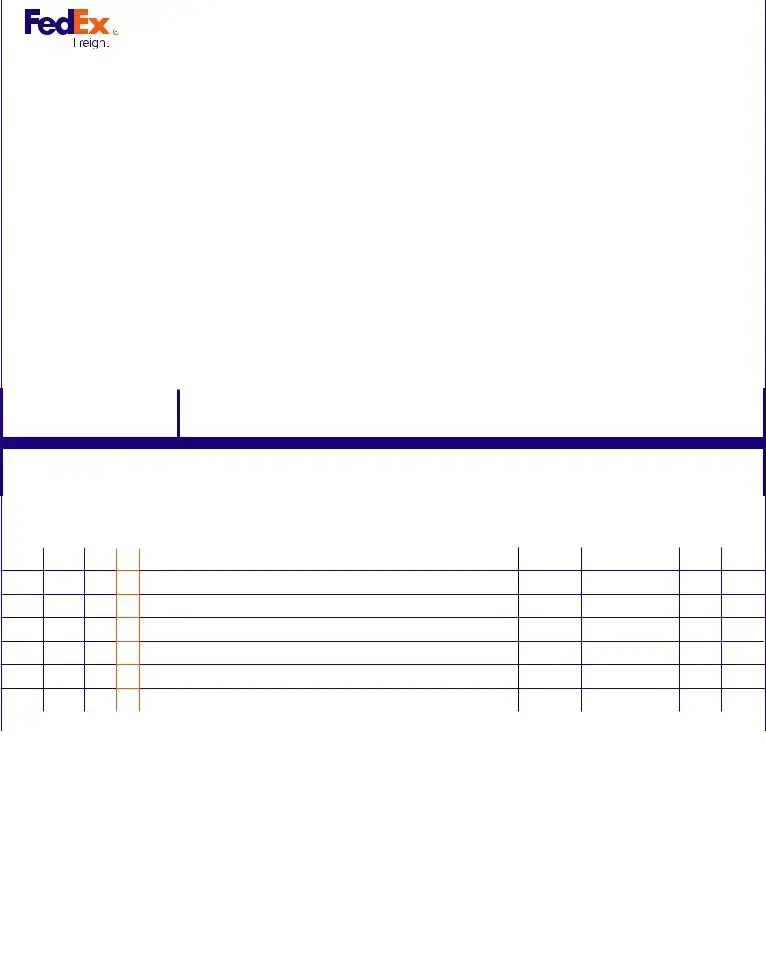1. What is a FedEx Bill of Lading?
A FedEx Bill of Lading is a legal document required for the transportation of goods. It serves as a receipt for the goods and indicates the terms under which they are being shipped. This document outlines the responsibilities of both the shipper and the carrier, protecting the interests of all parties involved.
2. What information is needed to fill out the form?
To complete the FedEx Bill of Lading, you will need the following information: shipper's and consignee's names and addresses, ZIP codes, phone numbers, service type, any special instructions, and payment details for freight charges. If applicable, information regarding hazardous materials must also be included.
3. Are there options for shipping speed?
Yes, you can select from several service types, including FedEx Freight Priority for faster delivery and FedEx Freight Economy for a more economical choice. Additional options, such as A.M. Delivery and Close of Business Delivery, are also available to meet specific shipping needs.
4. What does C.O.D. mean?
C.O.D. stands for "Cash on Delivery." If you select this option, the carrier will collect payment for the goods upon delivery. You must specify the payment method, which can include certified funds, company checks, or personal checks. Ensure you include the correct details for efficient processing.
5. How do I declare the value of my shipment?
If you want to declare the value of your shipment, write the agreed or declared value on the Bill of Lading form. It's important to note that this affects liability limits in the event of loss or damage. The maximum liability for new items is typically $25 per pound, while used items may have a lower limit.
6. What are the liability limits for my shipment?
Liability limits vary depending on whether the items are new, used, or reconditioned. For new articles, the standard liability is $25 per pound per package. For used items, it is generally $0.50 per pound. There may also be options to purchase additional coverage for higher-value shipments, subject to applicable rates.
7. How can I contact FedEx for assistance?
If you have questions or need assistance with your Bill of Lading, you can contact FedEx at 1-866-393-4585. Their support team is available to help you with any inquiries regarding the document or shipping process.

